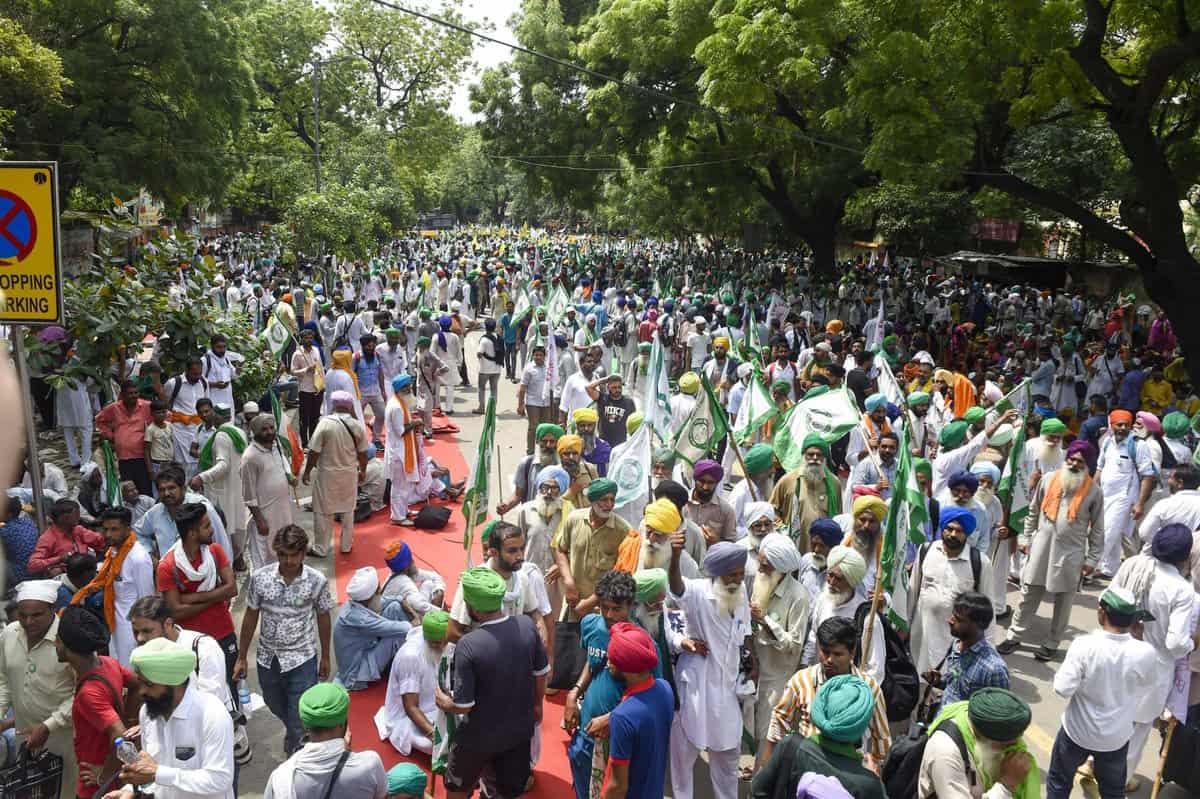
New Delhi: The year 2022 saw an increase of more than 23 per cent in demonstrations and dharnas at Jantar Mantar here over the previous year mainly due to lifting of Covid curbs, police said on Tuesday.
According to official data accessed by PTI, 661 demonstrations and 189 dharnas were held last year at Jantar Mantar with police permission as compared to 560 demonstrations and 129 dharnas in 2021.
In 2021, the second wave of COVID-19 had hit the national capital between April and May during which the Delhi government imposed restrictions on any type of gatherings, including protests.
An analysis of the data shows that there was 23.36 per cent increase in demonstrations and dharnas at Jantar Mantar last year as compared to 2021.
Some of the biggest protests that took place at Jantar Mantar in 2022 included the protest demanding establishing of an Ahir regiment in the Indian Army and farmer protest against the Centre over minimum support price.
According to police, both dharnas and demonstrations are forms of public protest.
Explaining the difference between a demonstration and a dharna, a senior police officer said that a demonstration is a public gathering to raise awareness about an issue, while a dharna is a form of sit-in protest at a public place to demand action or seek attention over a certain issue.
“Dharnas are mostly peaceful in nature while demonstrations can turn aggressive,” he said.
The officer said that before organising any dharna or demonstration, a body is supposed to take permission from the district police concerned which later grants approval based on the issue, organisers and type of gathering.
“But if a group of people gather without permission, in such a scenario, the protesters are allowed considering the nature of the protest and if it is not against an immediate issue or the government or is not affecting public at large,” he said.
Speaking about the challenges faced by the police while handling protesters, the officer said it is their responsibility to ensure the protesters do not enter any important installations including Parliament, PMO, and residences of the President, home minister or any other important dignitary.
“We need to ensure that there is no breach of security and law and order is maintained. In case, two groups with different ideologies gather to protest over the same subject, we need to ensure that they do not come face to face,” he said.
According to police officials, they also need to ensure that no protester harms himself by self-immolation or climbing a tree.
“Most importantly, we ensure that protesters do not indulge in any hate speech. Besides, we have to ensure that no anti-national, caste or religious slogans are raised which can disturb the communal harmony of society,” the officer said.
Recalling one such incident, he cited the arrests made by Delhi Police for allegedly raising anti-Muslim slogans during a protest near Jantar Mantar in August, 2021 in which former BJP spokesperson Ashwini Upadhyay was also held.
“We also need to ensure that protesters do not turn aggressive, go beyond Jantar Mantar and indulge in blocking traffic. Police and paramilitary forces are deployed at the protest site to ensure no untoward incident occurs, and in case it happens, protesters are detained and legal action is taken against them,” the officer added.

